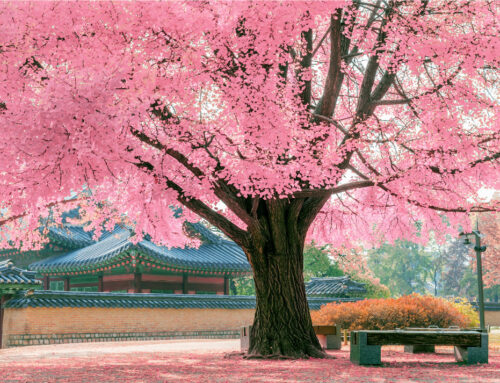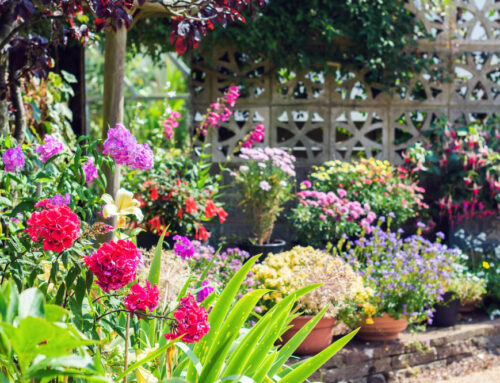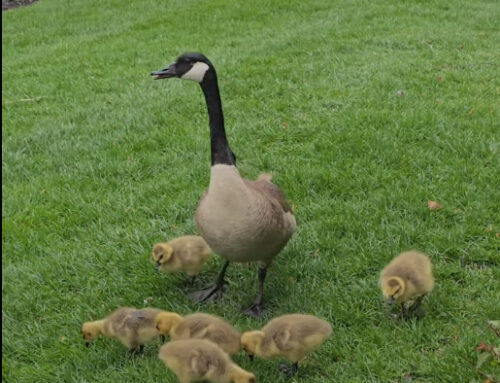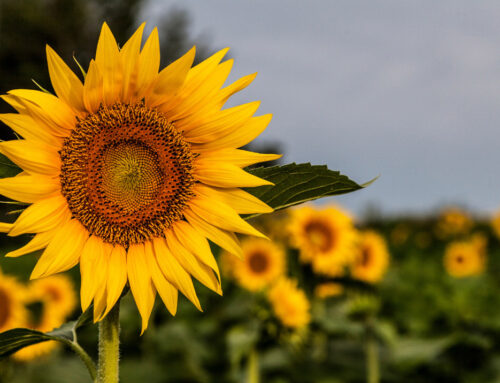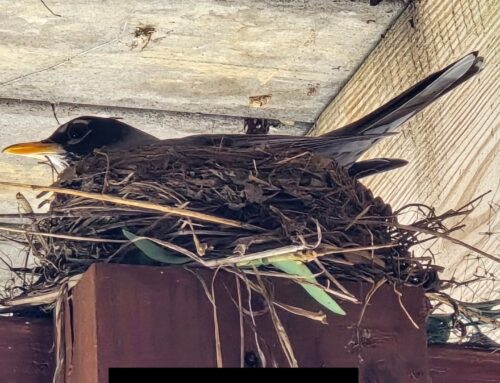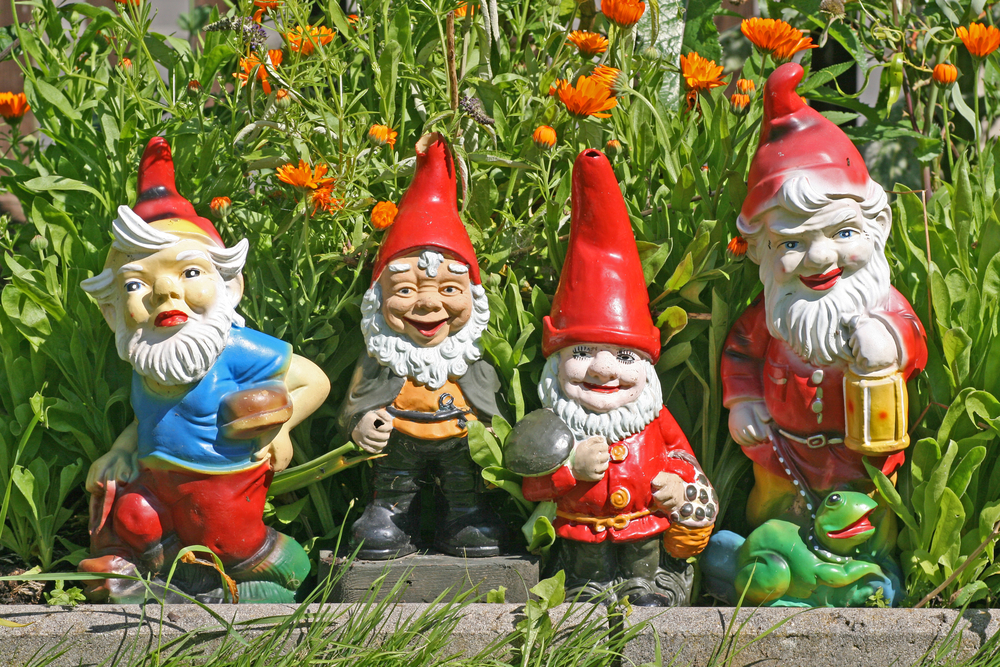 Home and garden construction projects should come with special warning signs for klutzy people like me. Last week, I: 1) tripped over a suspended string boundary line, 2) stepped into an open fence post hole (thankfully, no injuries), and 3) slipped, then slid down an 8-foot soggy, clay embankment, stopping just short of doing a header into our pond. Deciding my physical safety took precedent over weeding during construction, I instead took Peggy Sue, my e-trike, out for a ride around the neighborhood to take in the beauty of others’ gardens. And while I was out, I rode past a perfectly charming backyard that was hosting an Alice in Wonderland themed birthday party. Alice was there, as was the Mad Hatter, a few chess pieces, and I think I caught a glimpse of the Cheshire Cat eating cake. It was awesome. And it got me thinking about how fun garden parties can be and how diverse – dare I say, even crazy and outrageous? – we can make them with a bit of creativity.
Home and garden construction projects should come with special warning signs for klutzy people like me. Last week, I: 1) tripped over a suspended string boundary line, 2) stepped into an open fence post hole (thankfully, no injuries), and 3) slipped, then slid down an 8-foot soggy, clay embankment, stopping just short of doing a header into our pond. Deciding my physical safety took precedent over weeding during construction, I instead took Peggy Sue, my e-trike, out for a ride around the neighborhood to take in the beauty of others’ gardens. And while I was out, I rode past a perfectly charming backyard that was hosting an Alice in Wonderland themed birthday party. Alice was there, as was the Mad Hatter, a few chess pieces, and I think I caught a glimpse of the Cheshire Cat eating cake. It was awesome. And it got me thinking about how fun garden parties can be and how diverse – dare I say, even crazy and outrageous? – we can make them with a bit of creativity.
So, for this week’s post, I’ll get the ball rolling and share some of the garden party festivals and competitions I found on the internet.
- Garden Gnome Festivals: In many countries, collecting and displaying garden gnomes has become a beloved tradition. Gnome festivals celebrate the whimsical world of garden gnomes with events such as gnome costume parades, gnome decorating contests, best-dressed or most creatively placed gnomes in gardens, and scavenger hunts to find hidden gnomes in gardens, forests, or other greenscapes.
- Topiary Art Competitions: Topiary, the art of shaping trees and shrubs into decorative forms, is taken to competitive levels in many communities. Competitions feature elaborate designs such as animals, geometric shapes, or even famous landmarks.
- Vegetable Sculptures: Growing vegetables in unusual shapes or sizes, such as giant pumpkins or cucumbers shaped like stars, is a fun hobby for gardeners. Competitions often showcase these creative and sometimes humorous vegetable sculptures.
- World Championship Welly Wanging: Welly wanging is a sport originating in England where participants throw Wellington boots (rubber boots) for distance or accuracy. It’s often associated with rural fairs and outdoor festivals celebrating gardening and agriculture.
- Bee Beard Competitions: Bee beard competitions, particularly in places like Canada and the United States, involve contestants attracting bees to their faces using queen bee pheromones (I’m serious). The goal is to create the longest beard of bees for entertainment and education purposes. Benadryl and epinephrine anyone?
- Festival of Scarecrows: Scarecrow festivals, where communities create and display whimsical scarecrow designs, are popular in many rural areas. Participants compete for the most imaginative and humorous scarecrow.
- Seed Spitting Contests: Seed spitting contests, typically involving watermelon seeds, sunflower seeds, or cherry pits, are held at agricultural fairs and summer festivals in various countries. Participants compete to spit seeds for distance or accuracy.
- Rock Stacking Competitions: In some places, especially near natural landscapes like rivers or hiking trails, rock stacking competitions or challenges are organized. Participants create elaborate and sometimes precarious stacks of stones as a form of outdoor art.
- Cow Chip Throwing Contests: Now this is no bull. Originating in rural communities, cow chip throwing involves tossing dried cow dung (cow chips) over distances. Competitions are held at agricultural fairs and events, with participants aiming for the farthest throw.
- Extreme Gardening Challenges: Adventurous gardeners may participate in extreme gardening challenges, such as planting and maintaining gardens in unconventional or extreme environments like deserts, mountains, or underwater.
- Birdhouse Decorating Competitions: Community events or festivals sometimes include birdhouse decorating contests, where participants creatively paint and embellish birdhouses to attract birds while showcasing their artistic skills.
- Fairy Garden Contests: Fairy gardens, miniature landscapes with tiny houses and accessories, are popular among gardeners and hobbyists. Contests and exhibitions feature elaborate fairy garden designs with whimsical themes.
- Guerrilla Gardening: Guerrilla gardening involves clandestine planting of flowers, vegetables, or plants in neglected or public spaces to beautify urban environments. It blends activism with gardening to reclaim and transform urban landscapes.
- Tomato Fight Festivals: Inspired by the famous La Tomatina festival in Spain, tomato fight festivals involve participants throwing ripe tomatoes at each other in a playful and messy celebration of the harvest season.
- Sunflower Day: Some communities organize Sunflower Day celebrations where residents dress in yellow, decorate their gardens with sunflowers, and participate in sunflower-themed activities or tallest sunflower competitions.
- Pumpkin Regattas: In regions known for pumpkin cultivation, pumpkin regattas involve hollowing out giant pumpkins to create makeshift boats. Participants then race these pumpkin boats across water bodies, competing for speed and creativity.
- Floral Hat Parades: Held during flower festivals or garden parties, floral hat parades feature participants wearing elaborate hats adorned with fresh flowers and foliage. These parades often include prizes for the most creative or extravagant hats.
- Lawnmower Racing Championships: Lawnmower racing events turn mundane yard work into competitive races where modified lawnmowers speed around tracks. These races often attract participants who transform their mowers into high-performance vehicles.
- Fruit and Vegetable Fashion Shows: At agricultural fairs or garden expos, fruit and vegetable fashion shows showcase outfits made entirely from produce. Participants model creative designs crafted from fruits, vegetables, and other natural materials.
- Tulip Time Festivals: In regions famous for tulip cultivation, Tulip Time festivals celebrate the blooming season with parades, tulip garden tours, and cultural events featuring traditional Dutch costumes and folk dances.
- Herb Tasting Parties: Herb tasting parties offer guests the opportunity to sample and savor a variety of fresh herbs grown in the host’s garden. Attendees can learn about culinary uses, health benefits, and unique flavors of different herbs.
- Garden Party Festivals and Contests: Here’s fun for a good cause. In many communities, garden clubs and community groups “compete” against each other for the top garden party prize based on specific garden party etiquette, garden party floral attire, garden-themed foods, the serving of high tea, and quality of cholesterol raising desserts. Participants are judged on their creativity, garden decorum, culinary talents, and garden-themed games or activities. Funds raised are usually donated to community charities.
These all sound like fun. But I’m betting we can come up with even more ways to celebrate our gardens with others. Thoughts?


